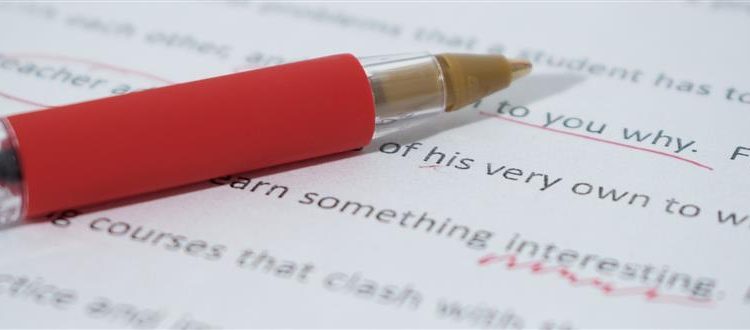Et tu, Et al.? How to Cite Multiple Authors in Academic Writing

You’ve done your research, you’ve made your bibliography, and you’re ready to write. But after a short time, you find yourself stuck. In-text citations are driving you crazy! Do you really have to list all six authors of the paper you are referencing? What if the first two authors are the same on two different papers? Is it the same regardless of citation style? Read on to remove your confusion about multiple authors in-text citations.
Single Author In-text Citations: A Refresher
There are three major styles of citation: APA, MLA, and Chicago/Turabian. APA is used most often by Education, Psychology, and Sciences, MLA is favored by the Humanities, and Chicago by Business, History, and Fine Arts. As the guidelines for author in-text citations vary slightly among the three, it is important to know the difference.
APA requires two types of information: the author’s last name and the date of publication of the work you are citing. If you are citing a direct quote, you must also add the page number.
There was no direct causal relationship found between the two events (Burnett, 1995)
Burnett (1995) noted that “Subsequent investigation revealed that the two events had no direct causal relationship to one another,” (p.147).
MLA style requires only the author and page number, as seen in the example below. There is no difference in citation style between a direct quote or a paraphrase.
It is still unknown whether caffeine delays the onset of Alzheimer’s disease (Grant, 204).
Chicago style requires all three whether you are paraphrasing or not.
A daily serving of broccoli was found to help patients recover more quickly from scurvy (Poblanski 2015, 99-100).
Citing Multiple Authors: How should you use “et al.”?
“Et al.” is a Latin term that means “and others,” and is used for in-text citations of works with multiple authors. The guidelines for using “et al.” vary slightly among the three major formatting styles.
MLA uses “et al.” for works with three or more authors, while Chicago calls for using it with four or more authors. APA format requires that you cite all of the authors at the first mention if there are three, four, or five, and use “et al.” afterward. If there are at least six authors, then you may use “et al.” from the first mention. In all cases, you should use the last name of the first author followed by “et al.” in your in-text citation.
For a paper written by Henderson, Watts, and Kirkland, the MLA citation would look like this:
Peanut butter is a rich source of protein (Henderson, et al. 328).
According to Henderson et al., peanut butter is a rich source of protein (328).
For a paper written by Rhyu, Lee, McSnyder, and Xi, the Chicago citation would look like this:
- Japanese wartime aggression remains a controversial topic in much of East Asia (Rhyu et al. 2012, 45).
According to Rhyu et al. (2012), Japanese wartime aggression remains a controversial topic in much of East Asia (45).
For the same paper cited in APA format, the first citation would be as follows:
- Japanese wartime aggression remains a controversial topic in much of East Asia (Rhyu, Lee, McSnyder, and Xi, 2012).
Additional in-text citations of the same paper in APA format would look like this:
South Korea’s state history textbook controversy of 2014 is a good example of this debate (Rhyu et al. 2012).
Same Authors, Same Year, Different Article
“Et al.” can create ambiguity in some situations. Take the following example of two publications.
- Lee, J. N., Lebowski, B., Kelly, J., & Ryan, T. (2000). “Intellectual Property Law in FTA Negotiations.” Journal of East Asian Affairs, 13, 14–25.
- Lee, J. N., Lebowski, B., Kelly, J., & Ryan, T. (2000). “Multinational Corporate Influence in the WTO.” Journal of World Trade, 67, 38-55.
Each citation style solves this problem a little differently. MLA adds the name of the text in parentheses, while APA and Chicago recommend adding a letter after the year to distinguish between the works.
MLA: Lee et al. point out that FTA negotiations have gone far beyond the original scope of goods and services trade to incorporate regulatory measures (“Intellectual Property Law in FTA Negotiations,” 20).
APA/Chicago: Lee et al. (2000a) point out that FTA negotiations have gone far beyond the original scope of goods and services trade to incorporate regulatory measures.
Note that in the bibliography of your paper, if you are using APA or Chicago style and you distinguish two papers this way, your bibliography should reflect this. For example:
- Lee, J. N., Lebowski, B., Kelly, J., & Ryan, T. (2000a). “Intellectual Property Law in FTA Negotiations.” Journal of East Asian Affairs, 13, 14–25.
- Lee, J. N., Lebowski, B., Kelly, J., & Ryan, T. (2000b). “Multinational Corporate Influence in the WTO.” Journal of World Trade, 67, 38-55.
Et al. is Always Plural
One last thing to note about “et al.” is that it is plural: it can never refer to only one author. What should we do in the following situation? We are citing the following two papers in APA format.
- Lee, J. N., Lebowski, B., Kelly, J., & Ryan, T. (2000). “Intellectual Property Law in FTA Negotiations.” Journal of East Asian Affairs, 13, 14–25.
- Lee, J. N., Lebowski, B., Kelly, J., Ryan, T, & Grant, R. (2000). Pharmaceutical Access and Intellectual Property Law in the WTO. Pacific Review, 15, 177–209.
The first in-text citation of these two papers would be as follows.
- (Lee, Lebowski, & Ryan, 2000)
- (Lee, Lebowski, Ryan, & Grant, 2000)
However, if we write (Lee et al., 2000), we are left with two identical citations. We cannot use (Lee, Lebowski, & Ryan et al. 2000), because “et al.” should refer to two more people. So, we must write all four names each time we cite it.
How do you make sure to use et al. correctly? What else confuses you about citations? Let us know in the comments!










I just want to use forum to thank Enago academy for delivering this resource material to us free of charge. I have this question also and that is ‘when an author is citing another author in an in-text citing who was cited by an author in a text, what is the new standard for this citation in APA?’ Emengini steve Emeka
Dear Emeka Emengini,
Thank you for getting in touch with Enago Academy. The following APA blog post nicely addresses your original query: http://blog.apastyle.org/apastyle/2010/05/secondary-sources-aka-how-to-cite-a-source-you-found-in-another-source.html
It is generally a good idea to cite the original source. Secondary sources may be cited only under certain circumstances, as outlined in the above APA blog post. Enago Academy had posted a related article on the APA style guide earlier this year. In case you have more questions for us, please route them through the Q&A Forum. It’s a FREE service for authors. Make sure you share this with your colleagues too. Have a wonderful week ahead and season’s greetings!